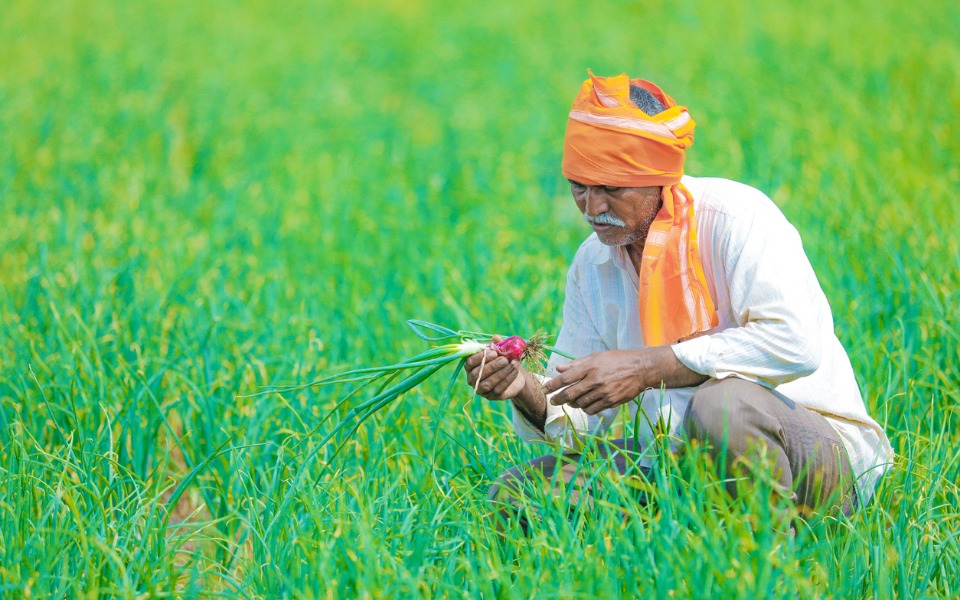
Crop insurance scheme falling flat as one state after another exits
States are slowly opting out of the Pradhan Mantri Fasal Bima Yojana (PMFBY), just two years after the Centre launched the crop insurance scheme with much fanfare.

States are slowly opting out of the Pradhan Mantri Fasal Bima Yojana (PMFBY), just two years after the Centre launched the crop insurance scheme with much fanfare.
It is not just states with non-BJP governments (even Gujarat has exited, following Bihar, West Bengal, Andhra Pradesh, Telangana, and Jharkhand) that are raising questions about the feasibility of the scheme.
The PMFBY is a voluntary crop insurance scheme for states introduced during the Kharif season in 2016.
All the states except Punjab had implemented the scheme. However, in Kharif 2018, Bihar, where the BJP is part of the government, was the first state to exit. In Kharif 2019, West Bengal and in 2019-2020 Rabi season, Andhra opted out.
Telangana and Jharkhand also decided to discontinue the scheme. Now, media reports suggest Rajasthan and Madhya Pradesh, which again has a BJP government, are planning to quit the scheme.
Almost all these states have cited high premiums as the reason for their decision. Farmers can enrol in the scheme by paying between 1.5 per cent and 5 per cent of the sum insured as premium. Farmers pay 2 per cent for Kharif crops, 1.5 per cent for Rabi crops and 5 per cent for annual horticultural crops. The rest of the premium amount is shared equally by the Centre and the states concerned.
The scheme, initially touted as a single-crop insurance plan for the whole country, has faced lots of criticism — claims paid by insurance companies are less than the premium they receive; farmers taking farm loans are made to compulsorily join the scheme; assessment of crop damages through crop-cutting experiments by state governments has created disputes between farmers and the insurance companies.
In Gujarat, insurance companies collected a gross premium of Rs 3,142 crore in 2018-2019, but settled claims worth only Rs 2,778 crore. However, in Tamil Nadu, the claims were greater than the premium received — the state paid Rs 1,642 crore as premium in 2018-19, while claims worth Rs 2,459 crore were paid by the insurance companies.
“These data, however, do not reflect the ground reality. The single-crop insurance scheme for the whole country has not really benefitted farmers,” said P R Pandian, general secretary, Tamil Nadu Cauvery Farmers Association.
“The scheme is based on the Kharif and Rabi crop seasons. But this classification is not suitable for Tamil Nadu,” Sid Pandian. “The climate, farming practices and crops vary from state to state. Tamil Nadu should have two kinds of crop insurance schemes as per the two crop seasons — Samba and Kuruvai,” he said.
“From this year onwards, the Centre has said it is not compulsory for farmers to join the scheme,” Pandian said.
He, however, has a grouse against the high-handed attitude of the insurance companies. “They compel farmers to pay the premium on time, but they take their own sweet time to disburse the compensation. Under the scheme, the compensation must be paid within 30 days of assessment. But, the companies delay the payment for unknown reasons,” Pandian alleged.
There are 18 insurance companies, including public sector firms, empanelled in the scheme.
Since many issues are already stacked up against the scheme, the changes brought by the Centre in February will not help matters. One major change was that the Centre capped its liability in the premium as 30 per cent for unirrigated areas and crops and 25 per cent for irrigated areas and crops.
Districts with more than 50 per cent of irrigated areas are considered as irrigated districts. That means states such as Tamil Nadu with a large number of irrigated districts will have to bear an additional premium subsidy. In Tamil Nadu, most districts have more than 50 per cent irrigated areas.
“The premium paid by farmers remains the same, but the Centre has capped its liability limit. Now, given that Tamil Nadu has more irrigated districts, its premium burden will increase. The state’s agricultural budget will be used mainly to pay the premium,” said R Gopinath, senior scientist and economist, MS Swaminathan Research Foundation.
Cauvery Dhanapal, president of Federation of Tamil Nadu Farmers Association, said the Tamil Nadu government will not discontinue or exit from the scheme given the current political scenario in the state.
“If you see the data, from 2016 onwards, the number of farmers and the area of land getting insured has increased year on year. The state is a major beneficiary since its claims are higher than the premium paid. Agreed that the scheme has some limitations, but need to address those that instead of opting out. It is because of the scheme that most farmers in Delta districts are continuing with agriculture” he said.
Dhanapal also pointed out that the state may not get financial support from the Centre if it exits from the scheme and launches its own version.
However, Ravishankar Mantha, chief executive officer of Agrisk Data Analytics, said states should have their own crop insurance scheme. “It is good for states to have their own crop insurance schemes. Insurance companies are not able to read the risk properly on the yield. That is why the premium rates under the scheme are exorbitant and farmers and governments are not happy with the high rates. It will be a good idea for the Centre to end the scheme and for states to implement their own policies. States should take care of their farmers,” he said.
Premium rates will have to brought down to the level of life-term policies for the insurance scheme to be of any use to farmers, Mantha said.

